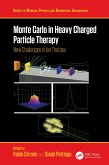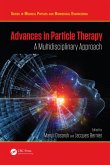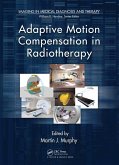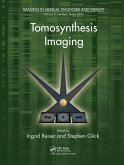This book provides a practical introduction to particle therapy. It provides a thorough introduction to the tools, their applications, and then details the components that are needed to implement it. It explains the foundations of beam production and beam delivery which serve to meet the necessary clinical requirements.
Dieser Download kann aus rechtlichen Gründen nur mit Rechnungsadresse in A, B, BG, CY, CZ, D, DK, EW, E, FIN, F, GR, HR, H, IRL, I, LT, L, LR, M, NL, PL, P, R, S, SLO, SK ausgeliefert werden.
"The book is a very personal (including many photos of his beautiful family) textbook/handbook by a particle therapy physicist who has about 45 years of experience honing his personal notes on the field through participation in many of the annual National Particle Therapy Schools as well as teaching at MGH and associations such as the AAPM and the Particle Therapy Cooperative Oncology Group (PTCOG). The author, Jay Flanz, is an MIT particle accelerator physicist who made the transition into a particle beam physicist at the start of the hospital-based proton radiotherapy era. There are few others who have seen this field's infancy and have stayed through to the present day...
The book begins by giving the reader both the evolution of particle accelerators and therapy as well as a very personal historical view by the author. The book then presents "get-up-to speed quickly" chapters on topics like setting requirements and components for particle therapy, radiation biology, basic review of the math needed, relativity, and charged particle interactions in matter with or without the presence of a magnetic field. While most medical physicists would skip over these chapters it can be argued to be extremely valuable for someone with an engineering background to read thoroughly anything that was not well known to them...The book is written for physicists, physical scientists, and engineers to give them the practical theory and knowledge so that "nothing goes wrong" for what are inarguably the most complex treatment systems ever devised. The book's title incorporates the word "safety" to emphasize that safety goes before all else. Many of his chapters end with a section called "What Could Go Wrong?"... If you are a medical physicist working in particle or insist your library order it this is a very useful book for physical scientists and engineers who are or want to be involved in particle beam radiation therapy."
-Thomas Rockwell Mackie, PHD, in Medical Physics, The International Journal of Medical Physics Research and Practice (July 2022)
The book begins by giving the reader both the evolution of particle accelerators and therapy as well as a very personal historical view by the author. The book then presents "get-up-to speed quickly" chapters on topics like setting requirements and components for particle therapy, radiation biology, basic review of the math needed, relativity, and charged particle interactions in matter with or without the presence of a magnetic field. While most medical physicists would skip over these chapters it can be argued to be extremely valuable for someone with an engineering background to read thoroughly anything that was not well known to them...The book is written for physicists, physical scientists, and engineers to give them the practical theory and knowledge so that "nothing goes wrong" for what are inarguably the most complex treatment systems ever devised. The book's title incorporates the word "safety" to emphasize that safety goes before all else. Many of his chapters end with a section called "What Could Go Wrong?"... If you are a medical physicist working in particle or insist your library order it this is a very useful book for physical scientists and engineers who are or want to be involved in particle beam radiation therapy."
-Thomas Rockwell Mackie, PHD, in Medical Physics, The International Journal of Medical Physics Research and Practice (July 2022)









